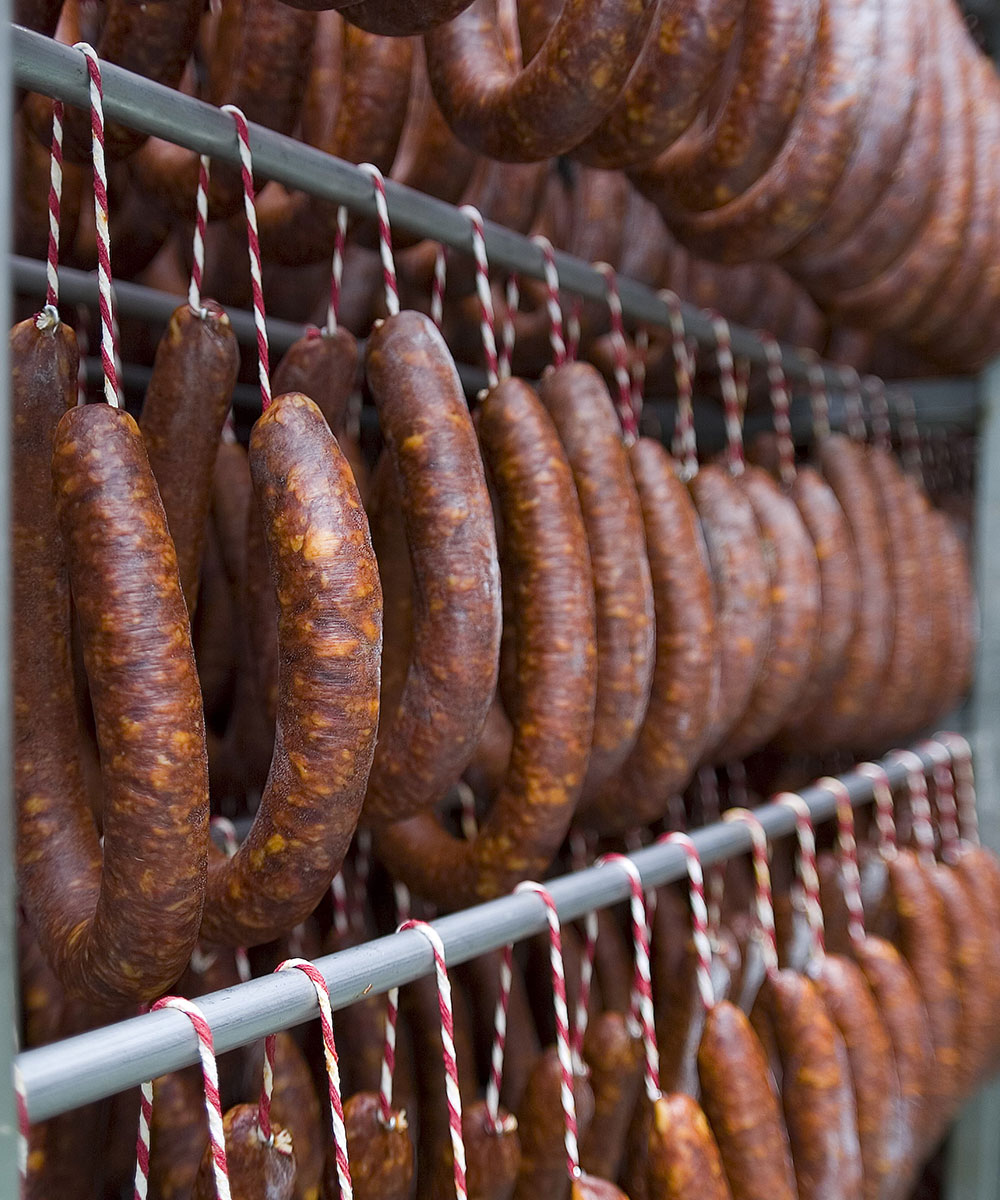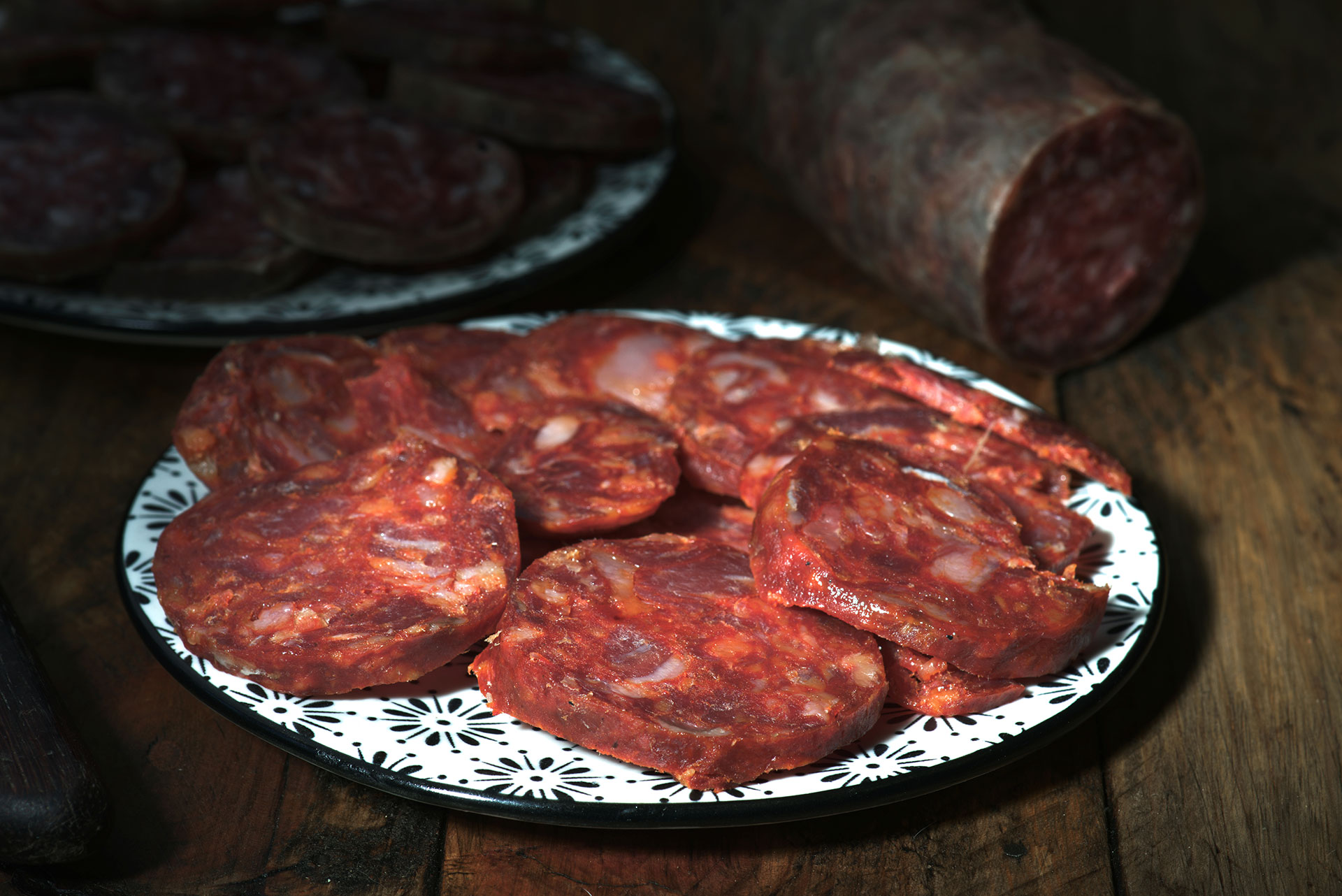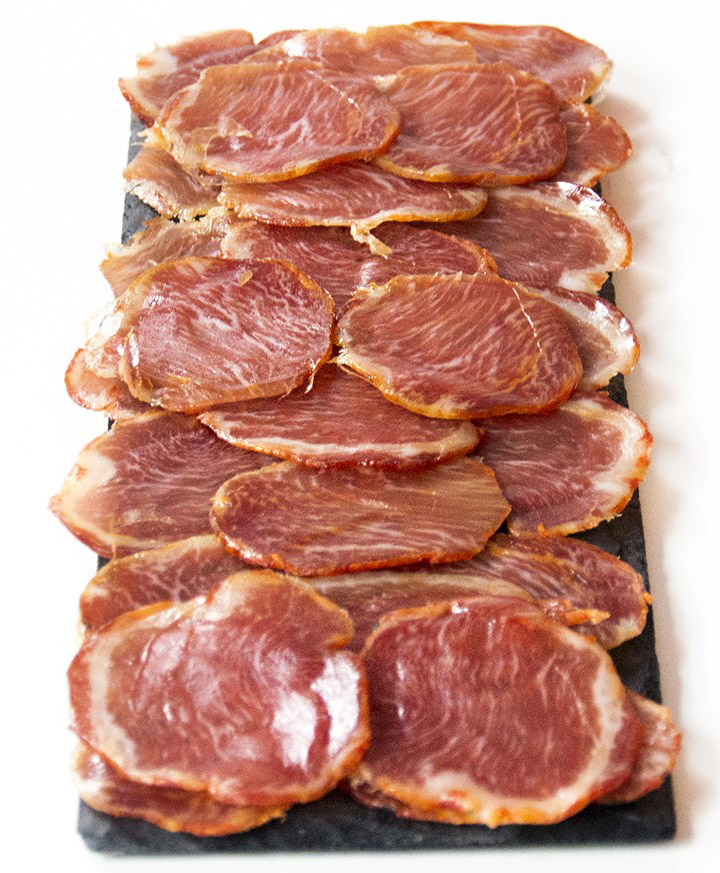Cured meats, including Chorizo, Spain’s iconic savoury sausage, are produced to a superior standard in the region of Zamora. Some of the best cured meats of Zamora come from Iberian pigs raised in small farms of Ledesma and Arribes del Duero. They are fed with acorns, cereals and natural feed.
If you are a retail or hospitality customer please log in to view the premium cured meats available in our catalogue.
CHORIZO
Zamora’s situation and climate has made it ideal for the traditional slaughtering of pigs and the making of pork products. These activities are firmly rooted in the province's history and culture; a cornerstone of its oldest gastronomical traditions.
Chorizo Zamorano (chorizo of Zamora) is a cured, raw cold-meat product strongly associated with the eating habits of Spaniards, both local to the region and further afield. It is characterized by its smooth, pleasant and balanced flavour.
It is manufactured in accordance with a method passed down for generations and possesses unique local characteristics.
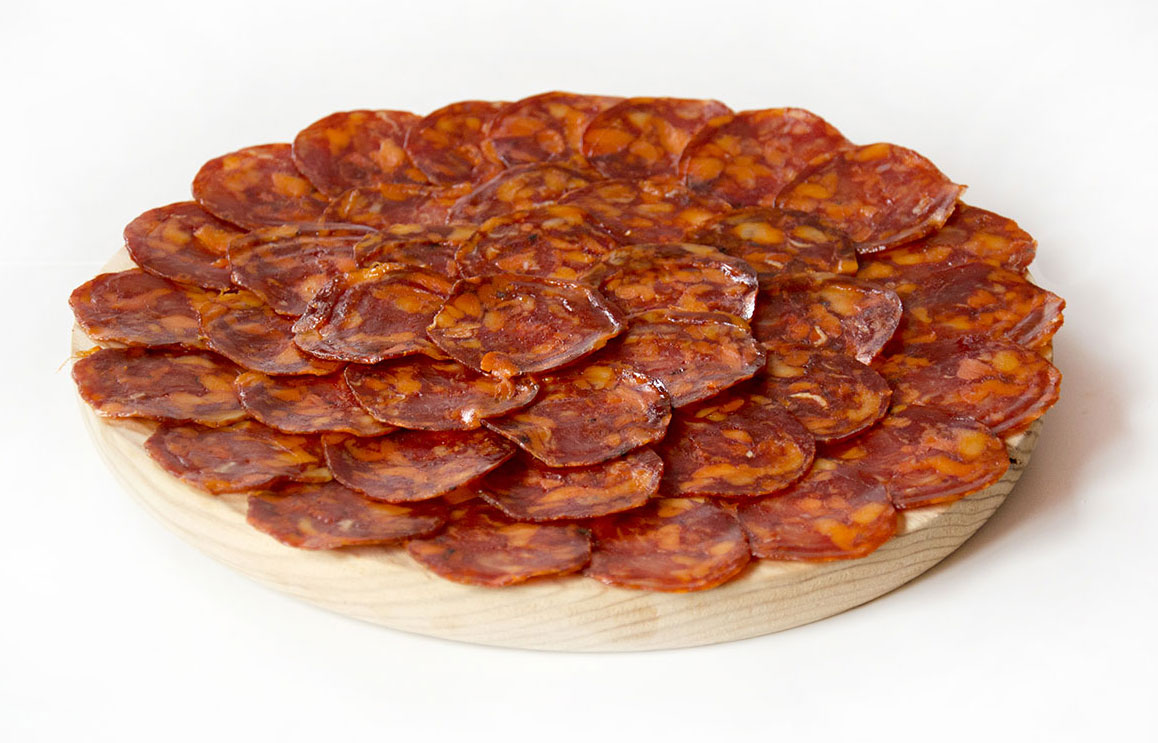
It is produced using the meat of white-coat fatty pigs, seasoned with Pimentón (smoked paprika) from the Denomination of Origin "de la Vera", salt, garlic and oregano.
This method is recognised with
a Spanish mark of guarantee
External shape and appearance: the external appearance has the typical cylindrical shape, of variable length and uniform calibre. More or less rough surface, with or without traces of mould. If moulds are present, they are not abundant, whitish in colour and spread over the entire surface of the sausage.
Appearance to the cut: it presents a slightly shiny surface. Uniform meat-fat distribution and medium size. The casing is easily detached, although it remains well attached to the dough.
Smell: it is characterised by a cured smell, with hints of "pimentón" (smoked paprika), garlic and oregano.
Taste: balanced, spicy sausages show spicy sensations with a medium-high intensity.
Texture: homogeneous and juicy.
CULAR. This chorizo is presented in thick (cular) pig casings of 40-60 mm. calibre and 50-60 cm. of length.
SARTA o HERRADURA. This is a single chorizo piece that has been tied with a rope at the ends to hang it. For this reason, in the end, they end up in the shape of a horseshoe (U case chorizo).
VELA. This is a type of chorizo that has a straight shape, like the chorizo cular, but narrower and approximately 40 cm long.
RISTRA o ATADO. This chorizo is 36/50 mm in diameter approximately, tied or stapled, constituting a string formed by various sausages.
SALCHICHÓN
Salchichón is a cured air-dried sausage made with lean pork, minced fat pork and is spiced mainly with black pepper (ground or in whole grains).
After chorizo, Salchichón is the second most popular dry sausage in Spain. The most prized, Salchichón ibérico, is made with lean Iberian pork meat mixed with pork fat, pepper, salt and oregano.
One of the most characteristic features of salchichón is its intense and brilliant red colour. When sliced small cubes of fat and peppercorns (where used) are visible. The exterior of the sausage is heavily textured and white with flora formed during its drying process.
Salchichón is notable for its firm and compact texture; it also has a delicate and sweet taste that contrasts with its spicy key notes, giving a unique aroma and flavour.
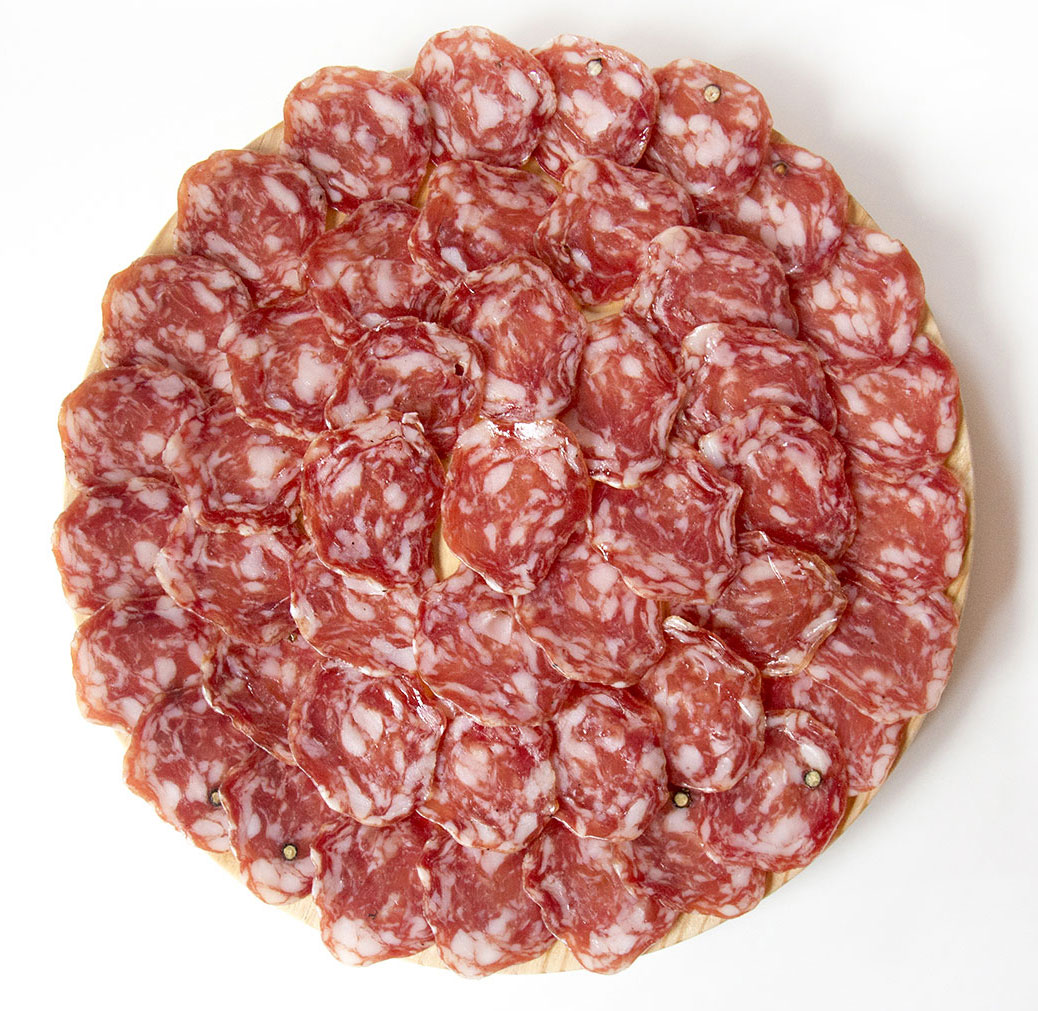
LOMO
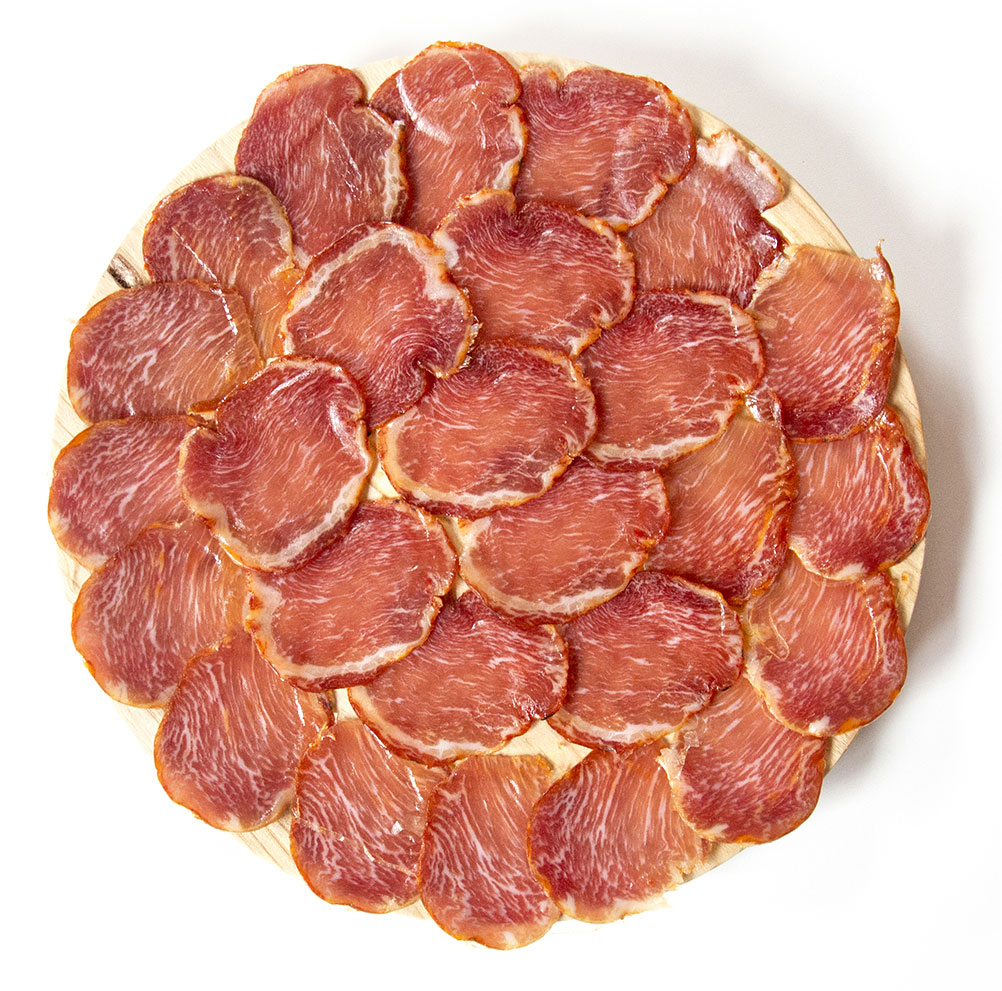
Lomo is a dry cured meat made from pork tenderloin, sometimes called Lomo embuchado or Caña de Lomo.
It is produced from the back of the pig (loin), and is formed into a sausage, either whole or minced with other products.
Meat from Acorn-fed Iberian pigs is of the highest quality. The animal is raised throughout its life in pasture and feeds only on what is naturally found in this environment including the acorns for which it is famous.
It should be enjoyed at room-temperature, allowed to breath and for the fat to begin to melt. It is best served in thin slices.
Lomo from the 100% Iberian acorn-fed pig
is one of the most valued of the cured meats of Spain.
PRODUCTION / PROCESSING METHOD
Once the fat of the loin is cleaned, the piece is left for 1 day at a temperature between 0 and 21 degrees, it is macerated with salt for 2 days, washed and dried for 2 days, marinated with pimentón, garlic, oregano and some oil olive for 2 days, drained for 2 days before being cased in gut.
Once encased the sausage is subject to an artisanal drying process, for a minimum of 70 days and sometimes for up to six months.
The result is an elongated piece that can weigh between 800 and 1.3kg (in the case of the 100% Iberian pig).
As with hams, a classification and labelling system is used to regulate and attest to quality. Classification depends on the diet and breed of the pig from which the Lomo is produced.
LABELLING
BLACK LABEL
100% Iberian Acorn-fed
Reb LABEL
Iberian Acorn-fed raised in freedom with cross-bred pigs, so they may be 75% Iberian or 50% Iberian
Green LABEL
These may be 100%, 75% or 50% Iberian. The pig lives in the pasture during the fattening phase (montanera), feeding on cereals and legumes, as well as natural pastures.
White LABEL
These may be 100%, 75% or 50% Iberian. The pig is farm-based and feeds on cereals and legumes.
